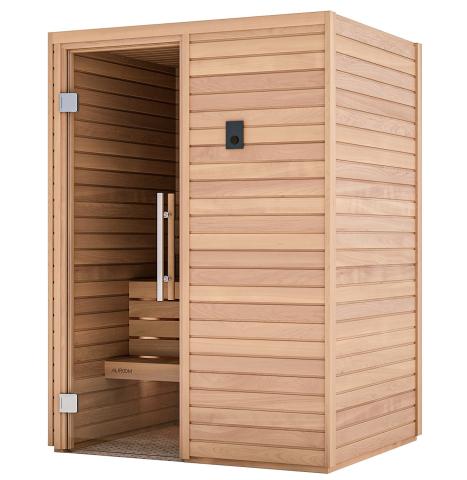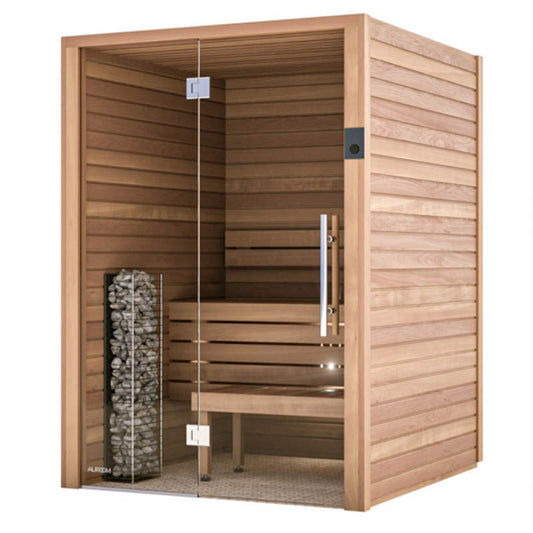The Main Principles Of Traditional Sauna
The Main Principles Of Traditional Sauna
Blog Article
Our Traditional Sauna Ideas
Table of ContentsFacts About Traditional Sauna UncoveredThe Traditional Sauna PDFs4 Easy Facts About Traditional Sauna DescribedAll about Traditional SaunaThe Of Traditional Sauna
A lot of the weight lost in a sauna is water loss and is re-gained upon rehydrating. Without an uncertainty sauna can be an essential component of a healthy and balanced weight loss program. To consider the distinctions in between conventional and IR saunas, I will separate these into verifiable, academic, and fabricated distinctions.Hence, the best factor in the saunawhich goes to the ceiling directly over the sauna heateris typically between 185 and 190 F. Claims that a conventional sauna surpasses 200 F is simply not true and not applicable for electric saunas marketed in the United States. The temperature level for a far-infrared sauna is normally set between 120 and 140 F; however, unlike the traditional sauna, the objective in and IR area is not to accomplish a high temperature.

When a standard sauna has been effectively heated up, the sauna wall surfaces are warm, the air temperature level has attained set temperature level and the rocks are very warmed. As a fascinating side note, the warmed walls and the rocks are discharging far-infrared warm, combined with the heated air, to develop an "enveloping warmth".
Traditional Sauna for Dummies
When the heat is accomplished, the components cycle on and off to preserve the high temperature level. Many typical sauna individuals appreciate putting water over the rocks to create heavy steam to raise sauna moisture levels. The advantages of putting water over the rocks include: making the space extra comfortable, dampening the nasal flows, and permitting the usage of aromatherapy by mixing necessary oils with the water.

When the energy enters the body, it creates the body temperature level to raise and inevitably causes sweat. In an infrared sauna it is essential for the emitters/heaters to continue to be on virtually constantly. Because there is no mass of rocks to keep heat, the sauna will cool down if the emitters turned off.
Getting My Traditional Sauna To Work
As discussed over, the sauna bather in an infrared space wishes to place himself before running emitters to obtain optimal benefit from the heat. The home heating time for both spaces can be extremely different, depending upon how the areas are made use of. For a typical sauna, a bather ought to allow 30-40 mins for the space to attain a desired temperature level and to appropriately pre-heat the rocks.

A well built sauna will commonly attain a temperature of 150-160 F in about 30-40 minutes. For hotter temperatures, the space might require to warmth for a longer duration.
To some, 15 minutes was "wasted" while the infrared energy heated up the timber panels as opposed to heating up a body, while others discover a pre-heated space to be a lot more comfy and think an elevated starting temperature level is essential to begin sweating. The size of recommended check here usage for each room is roughly the exact same (10-15 minutes per session); nevertheless, because of the lower air temperatures and the ability to feel the results of infrared warmth much faster than a typical sauna, it is not unusual for a person to spend a total of 20-30 mins in an infrared sauna.
Traditional Sauna Things To Know Before You Get This

The typical price per kWH of electrical power in the united state is approximately $0.11, so a 4.5 kW heating unit will certainly cost around $.50 to compete one hour, if the heater runs constantly for one hour. Typically a sauna heating unit will certainly run for 75% of the very first hour and 50% of succeeding hours on since the elements cycle once the established temperature level is achieved.
A 2 individual far-infrared room is typically literally smaller than a standard sauna, frequently concerning 4' x 4' or smaller sized. The IR home heating system is generally 1.5-1.7 kW utilizing a 120 volt 15 amp plug-in solution. Given that the area can be used quicker than a sauna space, we will presume the space is utilized for to of an hour consisting of warmth more up time.
Ultimately, there is a seldom talked about difference in the social experience between the two spaces. While our culture has lost some of the social benefit of the standard sauna experience, it can be really socially satisfying (Traditional Sauna). From family time in the sauna, to heart-felt discussions with loved ones, to sauna partiesthe typical sauna experience can cause intimate interacting socially
The 45-Second Trick For Traditional Sauna
The majority of greater end infrared areas include colored light treatment, audio systems and full-glass fronts.
Report this page